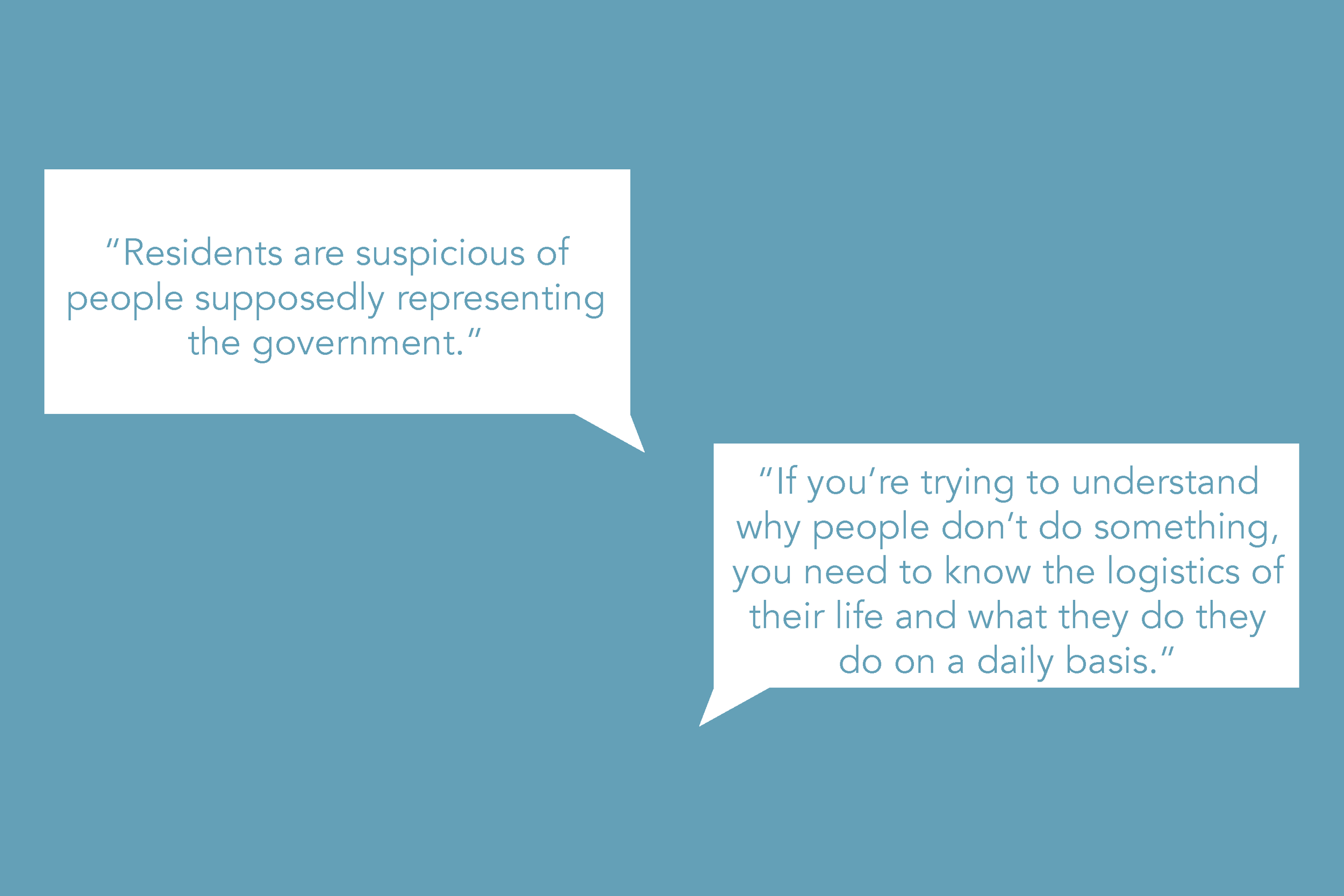US Census: Counting the Undercounted
The Problem.
How can we count the undercounted? Not being counted by the census has implications for regional governments and particularly nonprofits; every person not counted can result in $2,000 less of funding per year. Given the many fears and hesitations surrounding the government from all areas of American society, the US Census Bureau tasked us with understanding why individuals are hesitant to complete the Census and how to alleviate some of those concerns. In addition, the Trump Administration is likely to cut essential funding to the Bureau, and an immigration-related question may be added the census that would make some communities even less likely to participate.
The Process.
We began by understanding the purpose of the census, how the Bureau collects the data, and general trends around hard-to-count populations. We concluded that there could be underlying motivational or behavioral barriers to participation that cross both hard-to-count populations and the general population of the United States.
We interviewed various stakeholders, including data dissemination specialists, civic innovation leaders, external specialists, and regional Bureau employees to learn more about barriers to participation. We put ourselves in the mindset of the actual participants and were able to identify that the perceived risks of completing the decennial can greatly outweigh the benefits. We also dug into the Bureau's Census Barriers, Attitudes, and Motivations Survey, which shifted our interest to non-response follow up activities, where enumerators go door-to-door to all non-respondents seeking the information needed to fill out the decennial. We wondered if there was something about the enumerator experience that leads people to participate.
We conducted interviews with enumerators, survey participants, canvassers, and field training staff. We also delved into documents on enumerator training programs, listened to public radio segments, and gained insights from enumerators via online public platforms. We learned about the psychology behind civic engagement participation. Overall, we learned that while enumerators are a financially unsustainable practice for the Bureau, they do not truly highlight why people are not participating in the decennial. As we recognized the need to pivot, the news regarding the addition of the citizenship question to the decennial was released, so we shifted our focus to the impact this question will have on response rates given its immediacy and weight.
The final phase of our process focused on better understanding the immigrant experience with the decennial and their specific barriers to participation. After completing extensive interviews with immigrants, immigrant resource centers and immigrant-focused organizations, we distilled our findings down to eighteen insights. These eighteen insights revealed two main themes from our research: a culture of distrust with federal government agencies and a lack of convenience filling out the form.
The Solution.
From these two themes, we created two How Might We (“HMW”) statements, one more tactical and one more “blue sky” to ensure we were brainstorming across a spectrum:
How might we best represent the people living in the US in a better way besides the census?
How might we overcome a lack of convenience and a culture of distrust for immigrant populations in order to obtain a more complete and accurate count?
After brainstorming and roughly prototyping nine ideas, we decided to build and test two ideas, each representing a different level on the difficulty scale: a regional census and a rolling census.
Regional census. We knew from our research and subsequent insights that individuals resonated with and trusted their communities or local regions more than the federal government. With this in mind, we considered whether the Bureau could make the decennial more regional. For 2020, promotional messaging could showcase the direct benefits of the census to the community, which would resonate with people more than generalized nation-wide statistics. By 2030, the Bureau could shift from an agency that collects individuals’ data as a national count to instead counting individuals community-by-community. Individuals would provide the typical census data to their local community, which would anonymize it and provide it to the Bureau for a nation-wide amalgamated count across all communities.
Rolling census. The rolling census is meant to continue the Bureau’s initial push to use administrative data (i.e., data on individuals that resides with other government agencies) to backfill missing decennial data in 2020. Our concept takes this idea a few steps further. By 2030, the Bureau could primarily use administrative data for the decennial and complete the data set through census forms. Beyond 2030, the Bureau could entirely rely on this administrative data set. To ensure the data is robust enough for a complete and accurate count, the data collection system could pull data from any agency that already has a citizen touchpoint installed such as IRS, USPS, Medicare/Medicaid, DMV, and public schools. Whenever data is updated with another agency or government entity, the new information is relayed to the database, keeping it constantly updated for the Bureau. Government forms for all agencies could include questions that typically appear on the decennial to ensure that the data on file is correct. Instead of hosting a census count once every ten years, the data sets are updated continuously so that at any point in time, the Bureau can pull the most up-to-date information down from the system.
















































